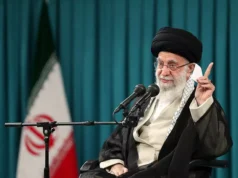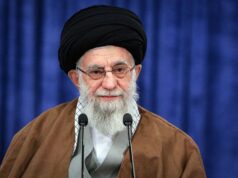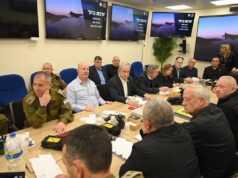Iran’s confrontation with the U.S. and international community over its nuclear program, as well as its ability to threaten U.S. interests and friends from Israel and Iraq to the Straits of Hormuz and Afghanistan, pose major challenges to U.S. power and influence. By contrast, Iran’s ventures into the Americas represent a less direct challenge. Nevertheless, the issue has received attention in Washington. In the past five years there have been numerous studies and congressional hearings focused on Iran’s penetration into Latin America, but little consensus on the severity of the challenge.
On the geopolitical chessboard, Iran pursues a multiple track policy in the Western Hemisphere. With Latin America’s democracies, it professes to want only normal diplomatic, trade, and cultural ties. With the set of states participating in the Chavez-Castro alliance (the Bolivarian Alternative for our Americas, or ALBA), Iran acts as friend and ally in relentless contention with what it considers a U.S. dominated world. Overall, Iran has multiple objectives: regular diplomatic relations, trade, prestige, sanction evasion, and a potential action base for asymmetric warfare and terror.
Iran: Ordinary Nation in the New World
Since the overthrow of the Shah and the emergence of the Islamic Republic, Iran has attempted to expand its influence as a middle-sized, regional power with global reach. It clearly seeks to avoid isolation as an international pariah despite the fact its extremist ideology, repressive police state, abhorrent anti-Semitism, and state sponsorship of terror make it an unfit and dangerous international actor. It aims to demonstrate it is a responsible—if often misunderstood and unfairly treated—global citizen demanding respect and sovereignty and prepared to work within international rules.
Tehran’s ability to build a strong relationship with Brazil and other Latin American democracies remains a key objective with trade and prestige diplomacy atop its agenda. Recently, Iranian trade has grown with the Western Hemisphere, reaching $3.5 billion in 2010, mainly in Iranian imports. Likewise, Brazil leads the way as an important agricultural exporter to Iran.
Under President Inacio Lula de Silva (2004-2010), Brazil’s relations with Iran reached an amicable highpoint. Lula downplayed the post-election violence of 2009, callously comparing Iran’s brutal repression of the Green Movement with a clash of rival soccer fans in Brazil, and later hosted Iranian President Mahmoud Ahmadinejad in November 2009. The following May, Lula traveled to Tehran and with the Turkish prime minister announced a nuclear fuel swap agreement that handed a momentary victory to Iran as it battled against UN sanctions. Lula’s diplomacy gave credibility to Iran’s claim that its ambitions do not include nuclear weapons and left a false impression of Iranian readiness to compromise on the nuclear issue. As a rotating member of the United Nations Security Council, Brazil also voted against 2010 UN Iran sanctions. Since the arrival of President Dilma Rousseff in January 2011, however, relations have cooled significantly.
Advancing relations with Iran is tempting for Brazil’s foreign policy makers. It allows them to appear as a counterweight to the U.S. It also reflects Brazil’s ability, as now the world’s sixth largest economy and an aspirant global status, to project influence and assume a more assertive role in troublesome issues that menace global peace.
In addition to trade and prestige diplomacy, Iran also aims to improve its image as a “civilized” nation by projecting “soft power.” Iran supports 36 Shi’a cultural centers in Latin America. In February 2012, Iran launched a region-wide Spanish language television network. Yet, the number of converts to Shi’a Islam will likely remain small and Iran’s capacity to win friends and extend influence to people across a divide of civilizations remains minimal. Relations between Iran and the Western democracies hinge on rational choices by elected leaders who must weigh the costs (such as U.S. disapproval, perceptions of hypocrisy, and danger of Iranian covert action) against the benefits (such as standing up against the U.S. and commercial advantage). For the foreseeable future, Iran will pursue relations with the region’s democracies via a mix of Persian charm, trade and commercial offers, and secretiveness.
Iran as Geo-Strategic Partner and Ally
A second, smaller set of nations in the region view Iran as friend and ally; they are led by radical populists, strongmen (caudillos), and dictators (Castro brothers) who harbor deep-seated antagonism toward the U.S. They proclaim themselves nationalist, pro-poor, and anti-imperial, standing in opposition to capitalism, globalism, materialism, and the values of representative or liberal democracy. With Iran, they share similar psychologies that mix revolutionary zeal, paranoia, and hostility toward a common enemy, be it “the Great Satan” or “Yankee Empire.” They hope for a multi-polar world where U.S. power and influence is vastly reduced or destroyed.
Venezuela’s Hugo Chavez, with support from Fidel Castro, launched ALBA in 2002. Today ALBA has eight members and is largely sustained by Venezuela’s petroleum largesse. The oil that binds ALBA together helped open doors for Iranian-Venezuelan cooperation in the Organization of Petroleum Exporting Countries (OPEC). ALBA has increasingly presented a united diplomatic front, aligning itself with Iran and Syria, while demonstrating sympathy for violent non-state actors such as Hamas and Hezbollah. This year Venezuela has provided Iran’s ally, the brutal Asad regime in Syria, with much needed fuel supplies, while ALBA members defend Syria’s right to put its house in order and vote in the UN against censure or sanctions for either Syria or Iran.
In January 2012, Iran’s Mahmoud Ahmadinejad visited the region—his fifth visit since 2005—with stops in Venezuela, Nicaragua, Cuba, and Ecuador. The choice of destinations, many argue, reflected a key narrowing of Iranian influence and opportunities. A sixth brief visit followed in June when the Iranian leader visited Bolivia and Caracas on the margins of his controversial participation in the UN environmental conference in Rio.
Ahmadinejad’s stop in Havana helped the die-hard Castro regime re-validate its anti-American credentials. Dictator Raul Castro offered his Iranian counterpart a hearty welcome, while the University of Havana awarded him an honorary doctorate in humanities. At first glance there is little impoverished Cuba has to offer Tehran. It is hard to imagine Cuban rum and cigars becoming popular in Tehran or waves of Iranian tourists hitting Cuba’s beaches. Yet, for Iran, Cuba—the quintessential anti-American “police state”—actually possesses revolutionary legitimacy, potent intelligence capabilities, a network of radical allies, and a capacity to serve as a clearinghouse for clandestine logistics, false documents, secure training facilities, and safe haven for would-be terrorists, making it an attractive partner. Both nations are still considered State Sponsors of Terrorism by the U.S. State Department.
Iran’s strongest support, however, continues to come from Venezuela’s Hugo Chavez. The former army lieutenant colonel delights in flaunting support for Iran and the so-called “axis of unity.” Publicized ties between the two have included a direct air link; Iranian investments in auto, bicycle, and cement factories; and joint petroleum and mining ventures. Reports of military cooperation abound but remain hidden from public view.
The use of Venezuela for “false flag” operations to circumvent sanctions on trade and investment is a prized asset for Iran. The U.S. Treasury has already targeted Iran’s Export Development Bank for sanctions. In May 2011, the U.S. also imposed financial sanctions on Venezuela’s state-owned PDVSA oil company for its sales of a petroleum derivative to Iran.
Nevertheless, Iran’s future relations with Venezuela are heavily contingent on Chavez’s ability to hold on to the presidency he has held since 1999. In 2011, Chavez underwent surgery to remove a “baseball size tumor.” He returned to Cuba for surgery and therapy in 2012 and speculation about his ability to live to compete in the October presidential elections abound. An electoral victory by opposition candidate Henrique Capriles Radonski would certainly lead to a swift downgrading of ties with Iran.
Recently relations with Bolivia and Ecuador have figured more prominently on Iran’s agenda. Both Evo Morales and Rafael Correa—younger leaders who are out to extend their grip on power and advance “progressive” anti-American policies—are clearly attracted to stronger ties with Iran. In return, Iran has promised hundreds of millions in projects and commercial deals. In addition to commercial ventures with Iran, Bolivia is hosting an ALBA military academy for the “people’s war” to which Iran’s Revolutionary Guards have reportedly been invited as trainers. Ecuador’s foreign minister recently visited Tehran, signing new investment agreements and receiving promise of Iranian investment in Ecuador’s oil industry.
Often debated is the potential for nuclear cooperation by ALBA members to advance Iran’s nuclear weapons ambitions. ALBA members defend Iran’s right to develop a “peaceful” nuclear program and pursue uranium enrichment. While Iran’s ALBA partners in the Americas possess important deposits of uranium and could aid Iran either with direct supply or indirect support such as sanctions evasion or illegal technology transfers—evidence of complicity remains sketchy.
Terrorism, Asymmetric Warfare, and “Mafia” States
Iran remains the world’s most active state sponsor of terrorism. Argentines and Latin Americans in general have not forgotten Iran’s role in two devastating terror attacks in Buenos Aires against the Israeli embassy (1992) and the AMIA Jewish center (1994). The expanding presence of Hezbollah and Hamas, often seen as surrogates for Iran, is also troublesome. While most see them working among Latin America’s Middle Eastern Diaspora for fundraising and engaging in illicit financial operations such as drug trafficking, their capacity to plan and perpetrate acts of terror cannot be discounted.
A strong tendency to a conspiratorial and terror-minded calculus remains integral to Iran’s operational playbook. With aerial and maritime links, cooperative military, complacent intelligence and law enforcement officials, coupled with corruption and ineptitude, Iranian agents are positioned to exploit opportunities with or without host country consent. A preventive attack by Israel or the U.S. against Iran’s nuclear infrastructure could trigger retaliation by Iran or proxy agents in the Americas. Iran’s leaders might seek to activate Hezbollah and Hamas agents operating from places such as the Tri-Border region between Argentina, Paraguay, and Brazil, Margarita Island off Venezuela, or ungoverned spaces. Agents with false documents or criminal elements working for Iran could be dispatched to the U.S. or at key targets like cruise ships or the Panama Canal. How far Iran’s partners would be willing to go if they risked U.S. retaliation is uncertain, however.
The alleged threat of a U.S. intervention is a unifying theme repeatedly exploited by the Castro and Chavez regimes. Recognizing their forces cannot stand up to U.S. military might, Chavez & Company hope to deter or wear down the U.S. with a strategy of asymmetric warfare. Terrorism, guerrilla warfare, suicide bombers, popular resistance, sabotage, and even biological or nuclear counterattacks constitute the arsenal of the asymmetric warrior. As an extremist, Chavez has shown an affinity for a mélange of terror and violence associated with the ideas of the violent Venezuelan-born, pro-Arab terrorist of the 1970s—Ilich Ramirez Sanchez (“Carlos the Jackal”)—and the Spanish military dilettante, Jorge Verstrynge. In a crisis situation, the strategic affinity between Iran and Chavez’s Venezuela might be sufficient inducement to trigger an asymmetric and unconventional clash in unanticipated quarters.
In the Americas, Iran is also poised to exploit the political-criminal-terrorist nexus that exists in Latin America. Powerful transnational criminal organizations, armed narco-terrorists such as the Revolutionary Armed Forces of Colombia (FARC), the ubiquity of global distribution networks or pipelines for cocaine and other illicit goods, and corruption and weak government institutions invite exploitation by external actors. They open the door for the emergence of what Carnegie Foundation’s Moises Naim calls “mafia states.” The loss of democratic control and transparency in the ALBA countries in particular opens the door for further Iranian probing.
The U.S., Iran, and Latin America
The Obama administration is currently engaged in a complex contest employing a combination of negotiations, sanctions, gunboat diplomacy, and covert actions that include cyber-warfare aimed at preventing Iran from obtaining a nuclear weapon. The U.S. also seeks to contain, curb, or counter Iranian influence throughout the volatile Middle East.
A strategy for Iran in the Americas is harder to find. Certainly there is concern. Director of National Intelligence James Clapper stated in February that the “2011 plot to assassinate the Saudi ambassador to the United States shows that some Iranian officials—probably including Supreme Leader Ali Khamenei—have changed their calculus and are now more willing to conduct an attack in the United States in response to real or perceived U.S. actions that threaten the regime. We are also concerned about Iranian plotting against U.S. or allied interests overseas.” General Douglas Fraser of U.S. Southern Command recently said in testimony before the U.S. House Armed Services Committee, “we take Iranian activity in the hemisphere seriously and we monitor its activities closely.” Yet, Fraser reported that he has seen no evidence of terrorist training camps or active terrorist cells in the Americas.
Overall the Obama administration has tended to minimize the threat posed by Iran in the Americas. It has attempted to preserve a façade of correct relations with Bolivia, Ecuador, and Nicaragua despite their continued pro-Iranian inclinations. Relations with Venezuela are essentially frozen while the Obama administration has engaged in openings to Cuba. Little else is known about the United States’ official efforts to curb or counter Iranian penetration.
The U.S. Congress has applied steady pressure on the administration for a policy of vigilance and firm response to any perceived hostile act by Iran. To that end, it has conducted repeated hearings to highlight the threat. A recent legislative proposal (H.R. 3783) would require a formal report on Iran to Congress and a strategy to deal with Iran. Given the proven penetration of Iran into the region and the potential for asymmetrical attacks in a crisis situation, the U.S. must devote greater diplomatic and intelligence assets to countering Iranian influence in the Americas.





